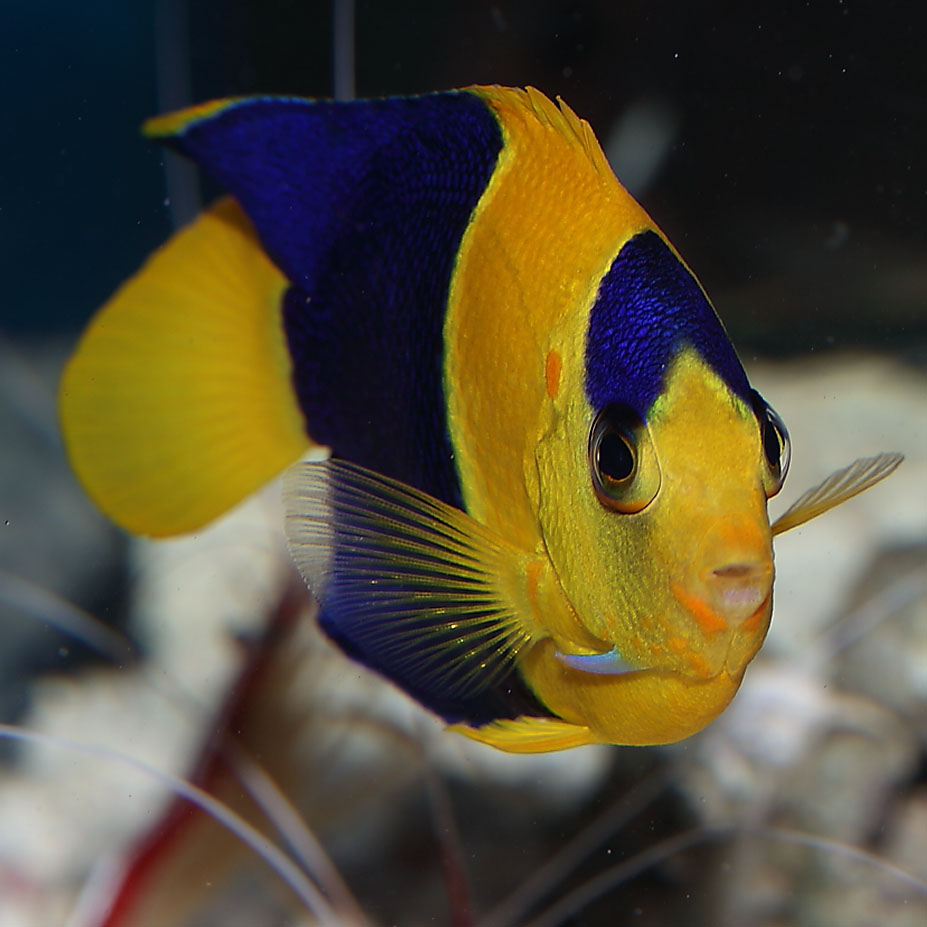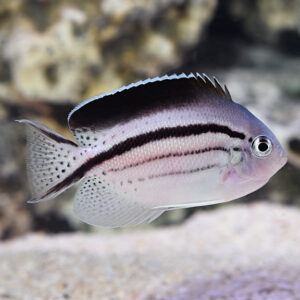Bicolour Angelfish, Centropyge bicolor, are attractive dwarf angels that make great additions to marine tanks. They are perfect for anyone looking to add activity and colour in their aquarium. As the name may suggest, these fish show off two colours. A deep blue and vibrant yellow. The contrast between the two is striking.
These Angelfish belong to the Pomacanthidae family. A group famous for their vivid colours. The name is Greek for, “cover” (poma) and “thorn” (akantha), which refers to the pair of strong spines on the gill cover.
Bicolour Angelfish Ecology.
These fish occur in the Indo – Pacific Ocean. They live around: Japan, New Caledonia and the Samoan and Phoenix Islands. They live in a variety of habitats. Such as, lagoons, coral reefs, drop offs and seaward slopes. Here they graze on algae and eat worms as well as small crustaceans.
Bicolour Angelfish can occur in pairs or groups. They are also protogynous hermaphrodites. Meaning they start life as female and turn male when they become the most dominant in their group.
Centropyge bicolor In the Aquarium.
It is important to have plenty of nooks or crannies where your Bicolour Angelfish can explore and feel at home. Keepers may also want to get a jump guard to stop any accidents.
Bicolour Angelfish are omnivores and do best when fed a varied diet. They will accept frozen Mysis shrimp and enriched frozen brine shrimp. We enrich all our frozen food with seachem garlic guard and Atvitol vitamins. These are great for keeping fish healthy by providing them with the nutrition otherwise lost in frozen food. In doing so, these additives support their immune system and increase longevity.
Bicolour Angelfish will eat masstick and graze on marine algae, that can be secured to the side of the tank with clips. Over time they will accept high-quality pellet or flake. We adapt all our Angel Fish to aquarium life before they leave us. We focus on their health, and most are eating a good quality flake food and/or pellet before being offered for sale.
Dwarf Angelfish can live in a mixed group or alone. It may also be possible for them to be in pairs. This depends on a few variables. Feel free to give us a call with any questions on this matter.





Reviews
There are no reviews yet.